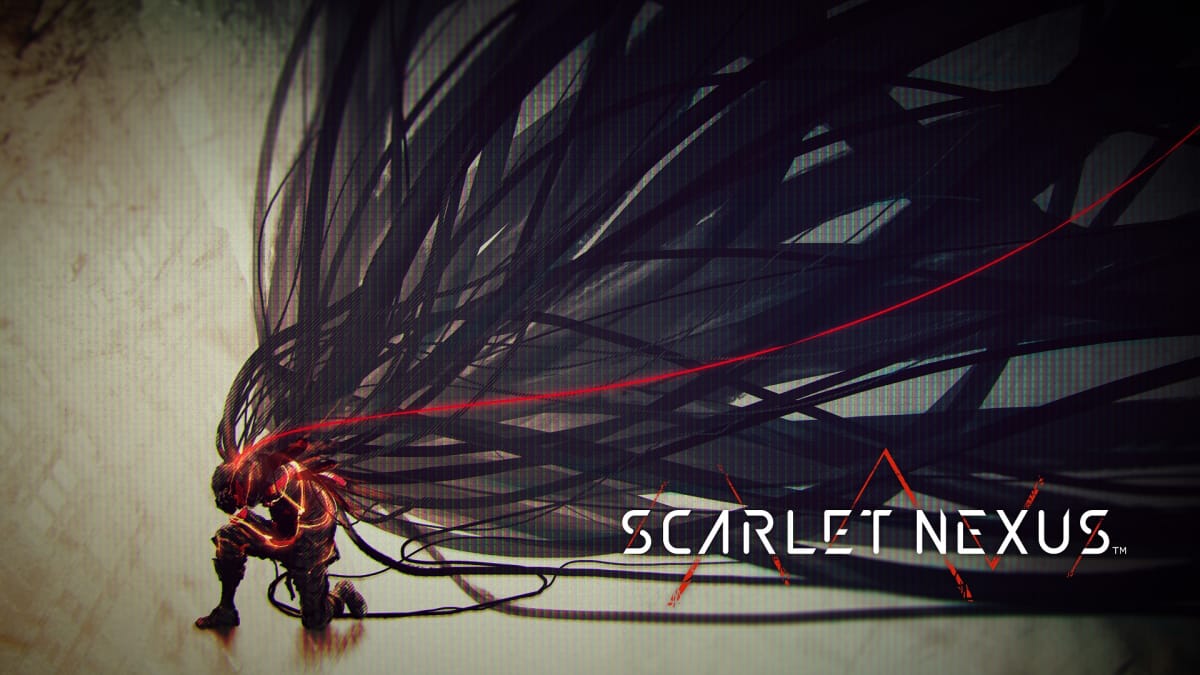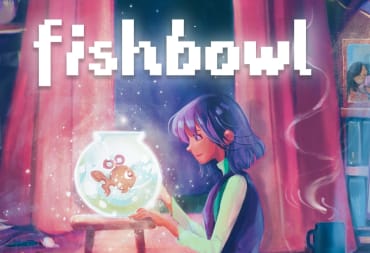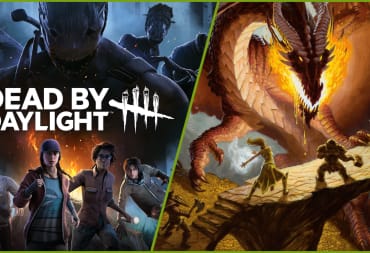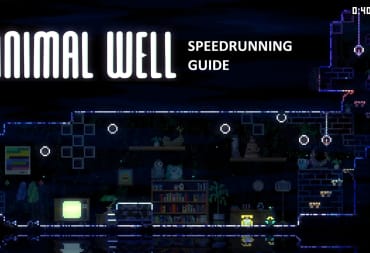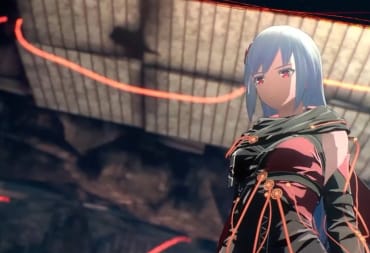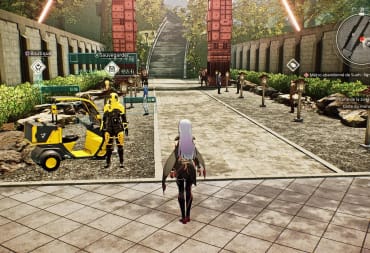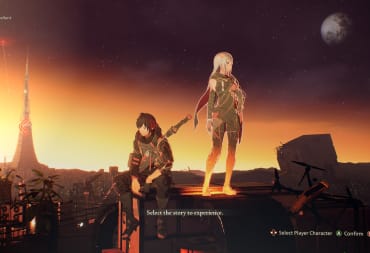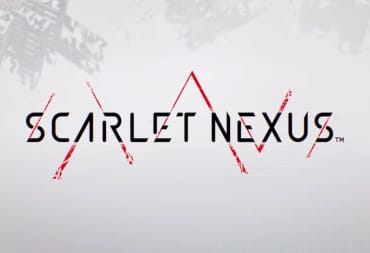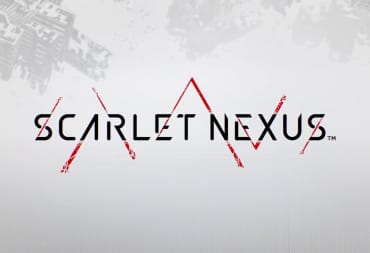With talent like Kenji Anabuki onboard, who has worked on classic Tales titles like Tales of Vesperia in addition to the upcoming Tales of Arise, Scarlet Nexus has much to live up to. While never garnering massive worldwide appeal, Tales is nonetheless one of Bandai Namco's heavier hitters. Fusing this veteran lineage with a cyberpunk-influenced aesthetic referred to as "brainpunk"--mixing messaging of dystopian governments and human augmentation with a cerebral component--Scarlet Nexus is one of the publisher's most promising original IP's in years.
Scarlet Nexus' Psychokinetics
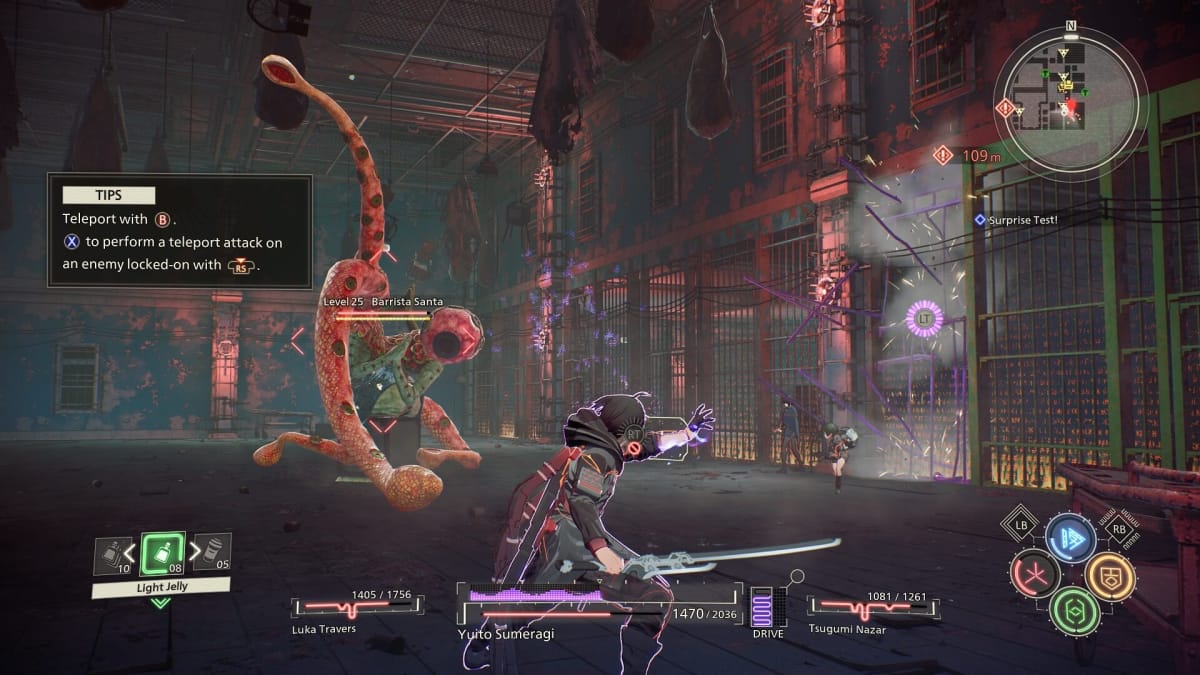
Much like many of Scarlet Nexus' systems, combat is exciting at first glance. Unlike many other Japanese games, which typically advertise hooks that end up underutilized, Scarlet Nexus' brainpunk aesthetic determines how its gameplay systems intertwine.
Combat is simplistic, but purposeful. Both playable characters feature a basic three hit combo which can be increased through the brain map, this game's skill tree. The brain map can also extend how often the special attack can be used within combo strings. First impressions paint a shallow picture of a combat system whereby players mash a single button with the occasional special attack mixed in.
This is where Scarlet Nexus' psychokinetics come into play. Yuito and Kasane share the same power, capable of hurling miscellaneous objects strewn about each environment. This psychokinesis informs the core combat loop. Following up an object tossed at an enemy with a physical attack initiates a rush attack, closing the distance between players and enemies. Conversely, using psychokinesis during a combo resets to neutral, meaning players can perform the special attack again. Soon after the prologue, the brain crush system is introduced.
Each enemy has a shield which can be broken by exploiting its weak point. Completely depleting this shield opens the door for the brain crush, allowing Yuito or Kasane to instantly kill the enemy with a guaranteed item drop. Focusing solely on physical attacks might get you through the opening hours, but by the mid-point, difficulty ramps up significantly. At this point, the developers expect players to understand its mechanics. It's never as deep as the best RPG combat systems, but it forges its own identity. Knowing when to reset to neutral and when to rush in flurries, meanwhile managing the psychokinesis meter, without taking damage brings its own reward. It doesn't take long to find a satisfying rhythm per enemy type, eliciting an almost paper-scissors-like dynamic.
Yuito prescribes to the aforementioned systems to a T. Kasane is more calculated. Her basic physical attacks are meant for larger groups of enemies, meaning individual hits build up less psychokinesis meter than Yuito's equivalent. This difference extends beyond the basic. Kasane's special is a backstep attack as opposed to Yuito's area of effect attack. Kasane also has access to more robust air combos earlier on. They're similar enough that the core concepts translate across both while remaining different enough that the same approaches can't be taken even among the same enemy types. Their powers are identical and the systems don't change, but it's the way they interact with those systems that differs.
If combat is a high point, the rest of the experience fails to reach this same level of cohesion. Combat can be augmented through the game's social sim elements, whereby forming bonds with squad mates unlocks more effects to their respective powers. Many role playing games tread this territory, but Scarlet Nexus fumbles in surprising ways. The bonding events at least succeed at deepening players' understanding of each character. On a mechanical level, it's about as redundant as can be. Even regarding gifting, the wrong present can't be given to the wrong character to lose or stagnate relationship points. Scarlet Nexus clearly communicates what gift goes with each character and how much said character would enjoy it. The automation takes away much of the engagement social sim elements bring to role playing games. As an extension to a genre about making difficult decisions, the lack of player agency during the bonding process feels misplaced.
The Dual Storyline
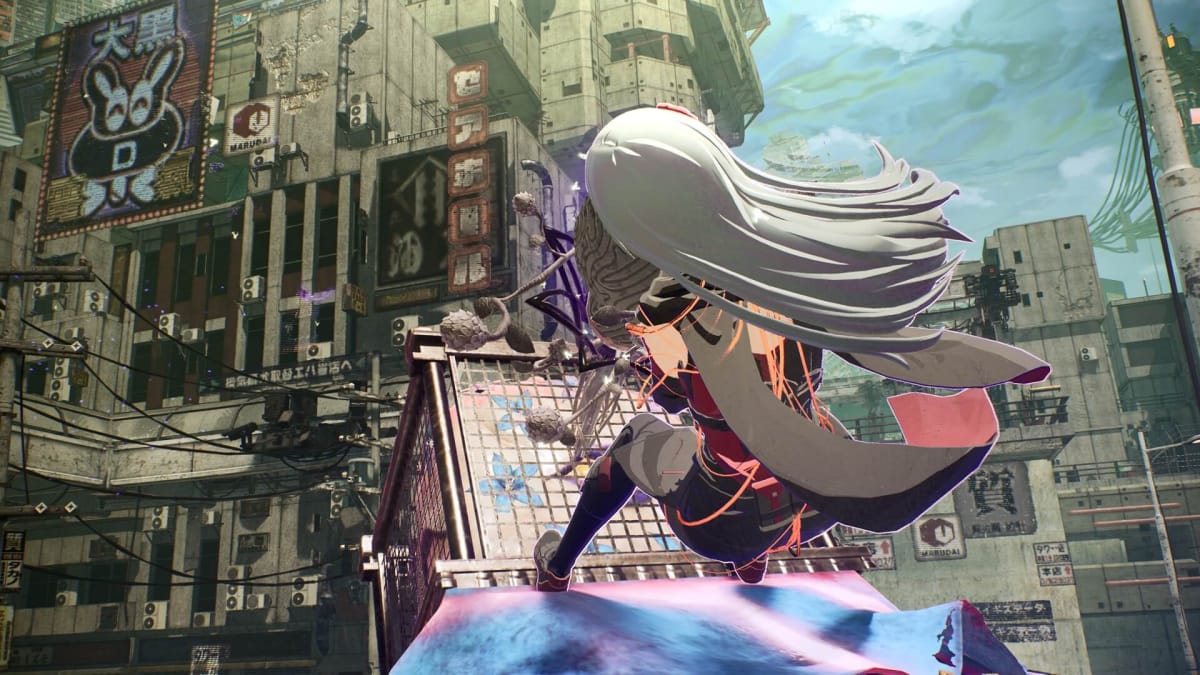
If combat grows dull by the end, this monotony can find solace in a gripping narrative. Scarlet Nexus' marketing makes a big deal about its dual-layered narrative, with protagonists Yuito and Kasane featuring supposedly distinct experiences--supposedly because this is only partially true. Combat takes on a different rhythm between the two. Yuito's single-targeting aggressive playstyle is offset by Kasane's more measured movements and crown control. Tough not a radical difference, there's enough distinction to add longevity to its combat loop upon a repeat playthrough as the opposite character.
Unfortunately, the same can't be said of its narrative. The story's frame remains unchanged--Yuito and Kasane are new recruits to the OSF, the Other Suppression Force. According to the lore, a phenomenon known as the extinction belt spurred on the Others' existence. This prompted the formation of the OSF, an elite group of psionics scouted as children and shaped into soldiers. The OSF can also consist of adults that were scouted much later in life or volunteers.
The story introduces poignant ideas about class disparities and the dangers of militarization. Adults and volunteers are almost viewed as second-class compared to the OSF members recruited during their formative years. Going further into where the story begins to show flashes of something greater would spoil the experience. The main plot isn't anything special, though. Without delving into spoiler territory, the stilted dialogue hammers home plot points that seem calculated only to keep players from getting bored rather than acting as purposeful revelations. Despite running under 40 hours per character, the story suffers from a plodding middle act.
This middle portion could have been expanded through the dual-storyline, but it doesn't work that way. In some instances, players learn insightful information that would have been withheld because of the lack of perspective. In most cases, though, the split storytelling approach doesn't feel essential. Two or three emotionally taxing scenes don't justify the amount of retreading. Even with a different platoon on different missions, you're visiting the same levels and fighting the same enemies. If a new environment or extension to a level shows up, expect it to last a few minutes at most.
This rehashing hit its peak during one middle chapter un which Scarlet Nexus throws Others at Kasane afflicted with the oil status. This makes sense for Yuito as he has access to a fire ability courtesy of squad mate Hanabi, but Kasane's elemental attack by this point is relegated to Shiden's electrokinesis. This leaves no exploitable weakness for Kasane. That such a major turning point in the narrative is strung along by enemy encounters that aren't even rejigged to make use of Kasane's squad powers stands as a testament to how inconsequential much of the second run feels.
However, the added perspective does provide meaningful insight into each character. Even with both parties having access to bonding events for the entire cast, these team members showcase different sides of themselves. Some characters, like Tsugumi, showcase a smaller range of emotions. In other instances, such as with Shiden, Scarlet Nexus provides a more complete picture of someone players may have thought they understood.
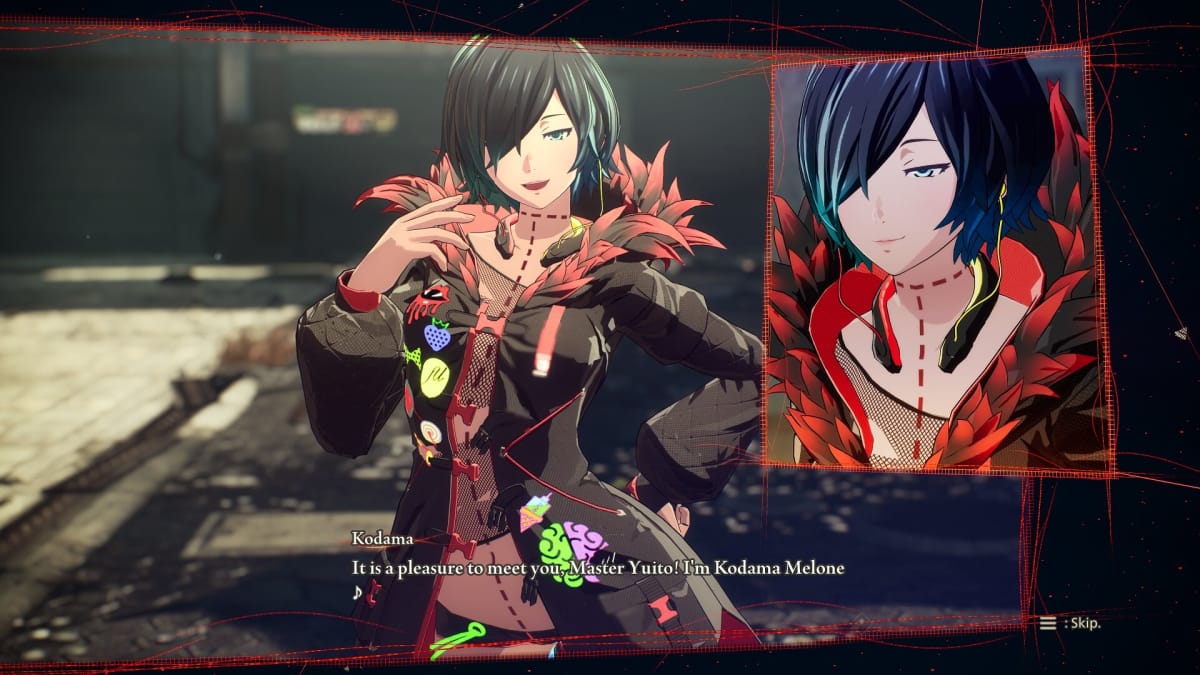
It's a shame that bonding events and even the main story are relayed through such monotonous means. Japan is no stranger to cutting corners. With typically constrained budgets and such large scripts, it's normal to see disparities between main cinematics and lower-budget dialogue scenes. Even with such reigned in expectations, Scarlet Nexus fails to feel meaningful.
More than 95% of the story is told through still panels with the only animation coming from a headshot laid over top the original image. Lips move and eyes occasionally blink and that's the extent of the life Scarlet Nexus employs. Even visual novels have more life, often imposing tricks to give the impression of a more dynamic scene. Characters in many visual novels have an animated idol state characterized by breathing. Artists also give character portraits several poses, regularly switching between them in conversations. Some visual novels and RPG's with visual novel-style scenes might even go a few steps further and by adding miscellaneous elements. Leaves might fall from trees, hair may blow along with the wind, etc...Scarlet Nexus.....just gets by with dull stills and headshots showing a limited range of emotion. The cinematic rollout is one of the biggest missed opportunities.
Scarlet Nexus Hype?
Scarlet Nexus is a perfectly fine game. Combat isn't the deepest, considering its lineage, but it succeeds gracefully at contextualizing its setting. Even with the lack of depth, it has enough to chew on amongst its protagonists to sustain roughly 25-40 hours per playthrough. The separate playthroughs also often offer surprisingly meaningful insight into the cast, showcasing how differently people act depending on who they're interacting with. Other aspects of its design are more mixed, though. The bonding events feel inconsequential and the content rehashing between Yuito and Kasane is draining. It doesn't help that aside from a handful of particularly potent moments for their respective runs, splitting them into separate campaigns is unnecessary. The startling lack of fully animated cutscenes further hurts its narrative potency, often slipping back to static images after a beautifully animated 3D cinematic runs for a few seconds.
TechRaptor reviewed Scarlet Nexus on Xbox Series X with a copy provided by the developer/publisher. The game is also available on Xbox One, PlayStation 4, PlayStation 5, and PC.
Review Summary
Pros
- Decent, Purposeful Combat That's Not Cluttered With Gimmicks
- Some Interesting Insight Due to the Differing Perspectives
Cons
- Some of the Lowest Budget Cinematics Around
- Too Much Re-used Content Across Playthroughs
- The Lack of Agency in Social Elements
Have a tip, or want to point out something we missed? Leave a Comment or e-mail us at tips@techraptor.net
